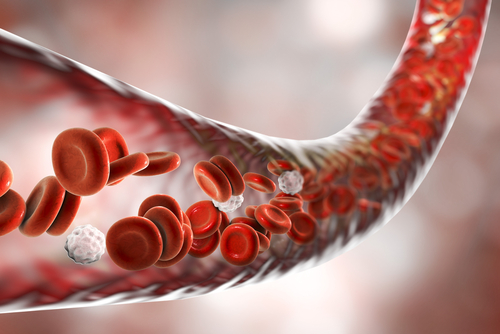Researchers have found that certain cellular numbers and characteristics found in menstrual blood may help develop a non-invasive test and faster diagnosis for endometriosis.
The study that supports that finding, “Analysis of menstrual effluent: diagnostic potential for endometriosis,” was published in the journal Molecular Medicine.
Diagnosing endometriosis often is a Herculean task, taking several years for patients to receive a definite diagnosis because the symptoms are shared with many other disorders. Also, to confirm endometriosis, patients often have to undergo invasive procedures.
Faster and non-invasive diagnosis not only will decrease patients’ suffering, but also allow for earlier therapeutic interventions that will improve long-term outcomes.
Researchers at the Feinstein Institute for Medical Research are investigating the genetic mechanisms and the cellular changes underlying endometriosis, and for that purpose they established the Research Out-Smarts Endometriosis (ROSE) program.
Volunteers in the ROSE program include both healthy and endometriosis participants who give peripheral and menstrual blood samples to be stored in a biobank. These samples are made accessible to researchers.
In this new study, researchers focused on the role of stromal fibroblast cells present in the so-called “retrograde menstruation.”
“The cause of endometriosis is not known. One theory is retrograde menstruation, which is where menstrual blood containing uterine tissue is transported into the abdominal cavity instead of out of the body. Almost all women experience retrograde menstruation, but we’re unsure why in some women this endometrial tissue latches on to the abdominal wall and internal organs and grows, causing endometriosis,” professor Christine N. Metz, PhD, study co-lead author, said in a press release.
The researchers analyzed the cellular content of the menstrual blood of endometriosis patients and found that it had significantly lower numbers of uterine natural killer (uNK) cells of the immune system, compared to the healthy people used as controls in the study.
Moreover, they saw that endometriosis patients’ stem cells were impaired in their “decidualization” potential, which is a process necessary to prepare the uterus for the successful embryo implantation and placental development.
“In this study, we found that the stem cells in the menstrual blood of women with endometriosis are very different from those of healthy women and we are learning from these differences to develop a novel non-invasive diagnostic,” Metz said.
Now, the researchers will evaluate if assessing these characteristics — namely, lower number of uNK cells in menstrual blood and impaired decidualization of menstrual blood-derived stem cells — can be integrated and help develop a new non-invasive diagnostic for endometriosis, as well as contributing to further understanding the mechanism of this disease.
“Instead of having to undergo surgery to accurately diagnose endometriosis, these findings will enable us to develop a rapid test for endometriosis based on menstrual blood, which can be easily collected. This will allow medical professionals to know if someone is at risk for developing endometriosis and start treatment sooner, and it will help them monitor patients’ responses to treatment,” said study co-lead author, Peter K. Gregersen, MD, of The Donald and Barbara Zucker School of Medicine, at Hofstra/Northwell.
“Endometriosis is a chronic, complex condition and improved understanding of this disease through studying menstrual blood is likely to drive personalization of new therapies. It also highlights the importance of research volunteers — our women volunteers in ROSE are helping to improve the lives of women across the globe,” he added.

